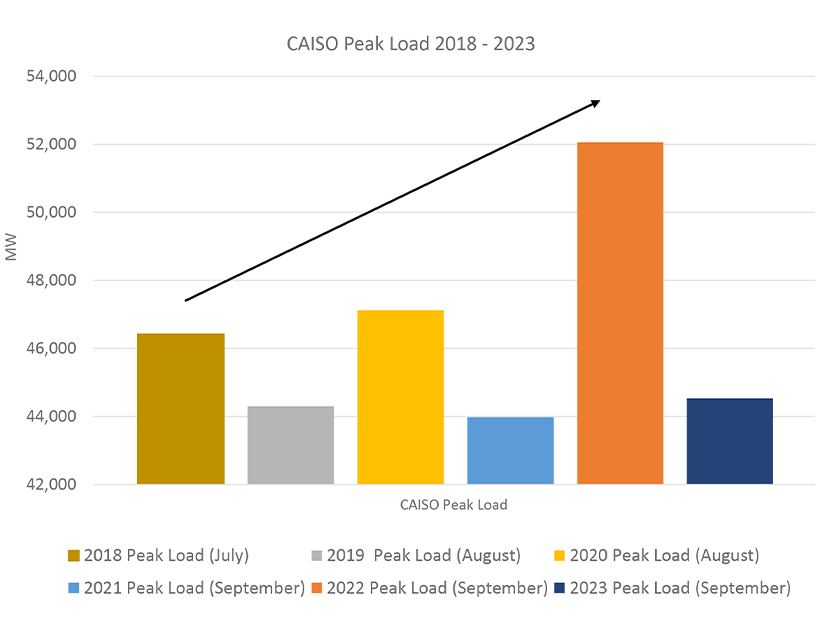
CAISO stakeholders are calling on the ISO to take a bigger role in reliability planning because of the increasingly complicated nature of ensuring reliability on the California grid in the face of climate change.
“At this point in time, we have arguably five different agencies involved in keeping the lights on in California,” Carrie Bentley, CEO of Gridwell Consulting, said on behalf of the Western Power Trading Forum (WPTF) during a June 18 presentation to the ISO’s Resource Adequacy and Program Design Working Group.
Key among those other agencies are California’s Public Utilities Commission, Energy Commission and Department of Water Resources, which manages the state’s strategic energy reserve.
“We have overlapping processes that are only getting more complex over time. The coordination and processes are growing more complex because the state is not only trying to accommodate climate change, [and] plan for climate change, but it’s also trying to prevent climate change,” Bentley said.
Because no single agency is in charge of ensuring “holistic” reliability, Bentley proposed that CAISO take on that role and, more specifically, conduct probabilistic loss-of-load-expectation (LOLE) modeling to better understand the aggregate impact of the changing climate on grid conditions.
“This [LOLE modeling] actually allows you to say, ‘What are the impacts of all of these probabilities, all these different extreme events, and these different levers being pulled on by different agencies? What is the aggregate impact on the CAISO balancing area?’ And the only way I know to do that robustly is through loss-of-load-expectation modeling,” Bentley said.
In addition to driving up peak load, higher temperatures are also causing “astronomical” increases in load variability, Bentley said. Between 2017 and 2023, that variability was significant enough to cause load forecasts to deviate from actual loads by several thousand more megawatts than historically normal.
Planning processes must account for increases in variability to ensure reliability, Bentley said. And because resource planning is conducted over so many different agencies and processes, it is unclear if processes are “calibrated for climate change” or if “CAISO’s balancing area is actually reliable,” she added.
“There is a clear and present need for not just re-evaluation of individual processes for climate change, but also to do this holistically. And we think CAISO is uniquely suited to provide this function. In fact, we think CAISO is probably the only agency that will be able to provide this function because they’re the only ones with a clear picture,” Bentley said.
Bentley also called on CAISO to update counting rules and the planning reserve margin (PRM).
Other stakeholders expressed support for Bentley’s suggestions.
“This resonates incredibly … and is something we deeply need,” Cathleen Colbert, senior director of Western markets and policy at Vistra, said during the meeting. “We need to understand, what is the reliability status of the balancing authority area on a forward-looking probabilistic basis?”
Aditya Jayam Prabhakar, director of resource assessment and planning at CAISO, reassured stakeholders that the ISO is already working to address Bentley’s two main requests: to evaluate forward CAISO reliability assessments in terms of LOLE modeling, and to update default PRM and RA counting rules.
WPTF also requested that the ISO establish a comprehensive mothball and retirement process for generating plants based on local needs, but Bentley emphasized that the LOLE modeling should first be “stood up, and then it will naturally flow into other processes.”

